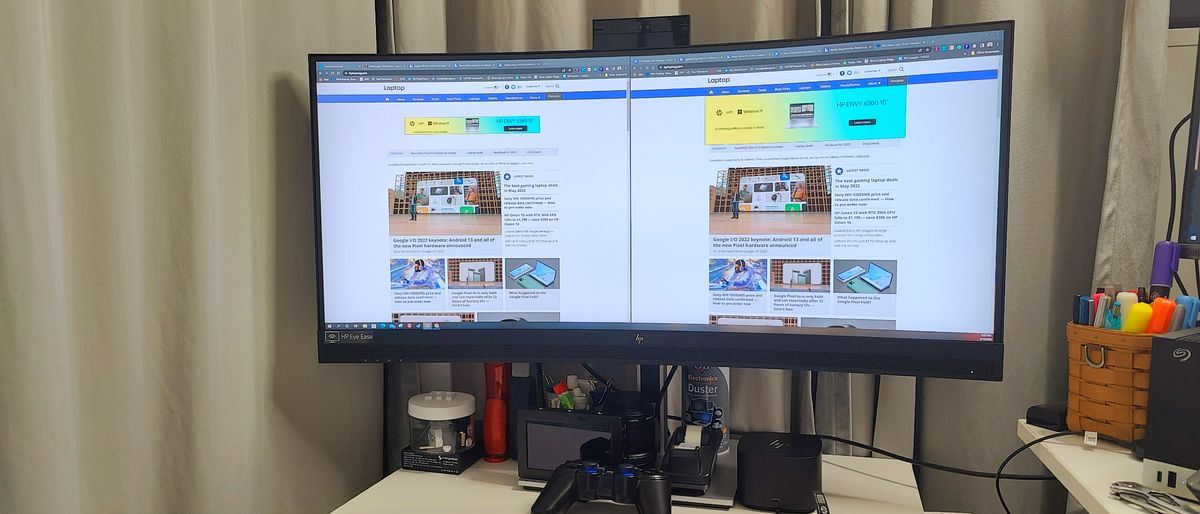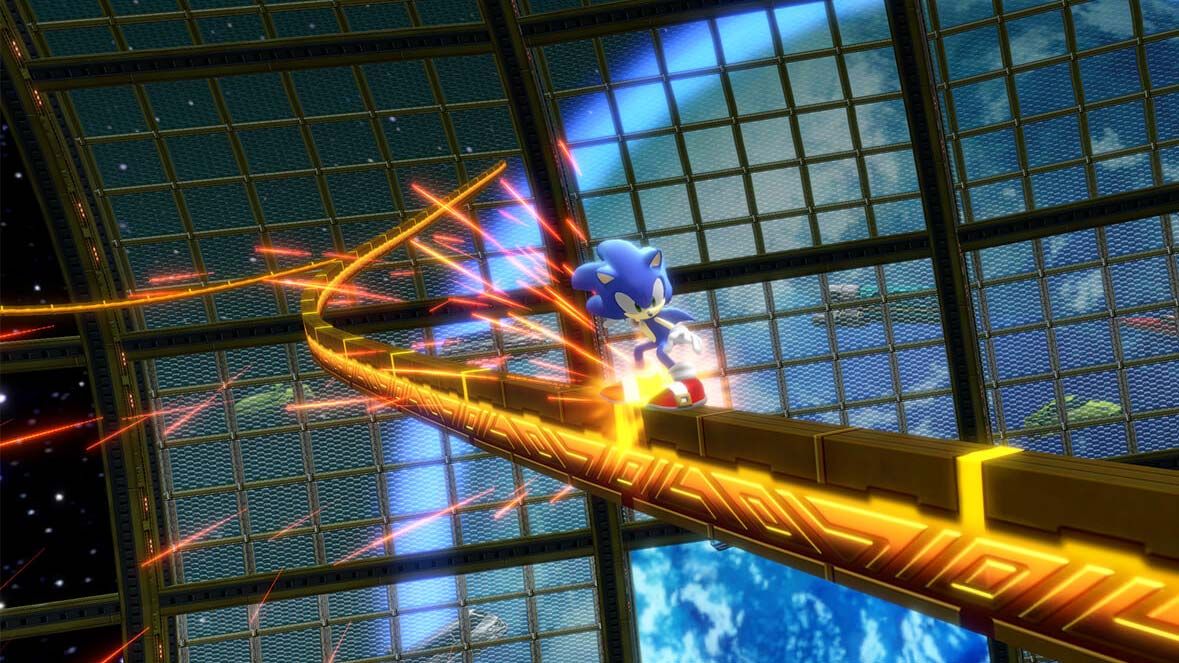Huawei Watch GT Runner Specs
Price: £259.99
Display: 1.43 inch AMOLED (466 x 466 pixels)
Mobile Payments: No
Connectivity: Bluetooth, NFC, GNSS
Battery: 14 days
Water resistance: 50m (164 feet)
Size: 1.82 x 1.82 x 0.43 inches
Weight: 1.35 ounces (without strap), 1.83 (with strap)
Did it really happen if you didn’t track it? That’s a question that comes to mind in the new era of fitness technology. Tracking every step taken on an outdoor run or each heartbeat while swimming laps is what drives many smartwatch users to keep up their fitness grind. Even knowing when you’ve hit 10,000 steps brings a sense of achievement.
Huawei has taken everything fitness enthusiasts have come to cherish about smartwatches and put it into its latest stylish, wearable sidekick: the Huawei Watch GT Runner. Essentially the Huawei Watch GT 3 but with a sportier design, the GT Runner aims to be your best friend when it comes to working out — but only to cardio fiends.
While it can track your running, walking an hiking route and be a great companion when swimming, those looking to get more out of Huawei’s wearable will find it comes up short. However, if you’re keen on discovering your running capabilities and making some data-informed improvements or just having a smartwatch you don’t have to charge for a full week, the Huawei Watch GT Runner is an ideal purchase.
Huawei Watch GT Runner price and configurations
Coming in at £259.99, the Huawei Watch GT Runner is surprisingly around the same price as the best smartwatches on the market today. This includes the $249.99/£269 Samsung Galaxy Watch 4, the $299/£219 Fitbit Sense, and the $279/£249 Apple Watch SE. The Apple Watch 7 leads the pack at $399/£369, so the GT Runner can be considered a fairly priced mid-range wearable.
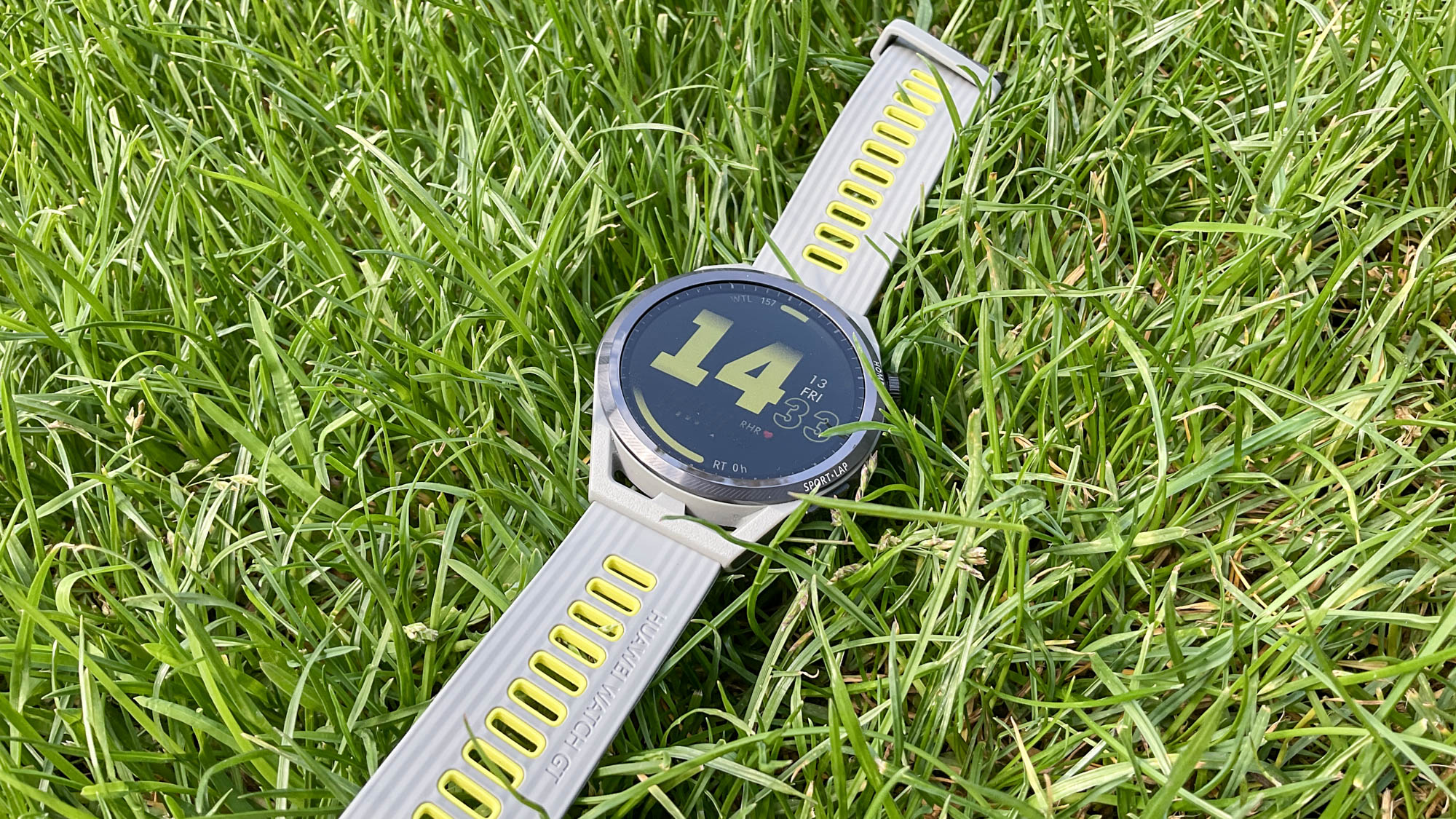
Sorry, U.S. readers. Huawei’s smartwatch isn’t available in the States due to an ongoing ban. However, it is available in other markets around the globe including the U.K. and Europe. There’s only one size available, and it either comes in grey, with a dash of yellow on the strap, or simply black.
Fitness-orientated smartwatches are usually on the cheaper end, which is why the GT Runner’s price tag comes as a surprise to me. You can find the swanky GT 3 Classic with a leather strap for £249.99 and GT 3 Active for £209.99. However, instead of making it fancier, Huawei has added flagship health and fitness features like SpO2 monitoring, accurate heart rate monitoring thanks to a TruSeen 5.0+ upgrade, a route mapper, and more. Plus, this is compatible with Android phones and iPhones, so it’s a viable option for users on either platform.
Huawei Watch GT Runner design
The Huawei Watch GT Runner boasts a durable polymer fiber and ceramic finish and two simple buttons to get around — one featuring an ”aircraft-grade” titanium-alloy crown. It can feel a tad bulkier than most, but overall looks slick and slim. Its circular watch face isn’t far off the look of many Wear OS smartwatches on the market, including Samsung’s Galaxy Watch and Garmin’s sport watches. If you’re a fan of a traditional, big-faced watch design, the GT Runner will be a familiar fit.
The watch also sports a hollowed-out lug build for a breathable fit. Since it should mainly be used for cardio workouts, it’s a subtle addition that means my wrist didn’t feel as sweaty when working out.
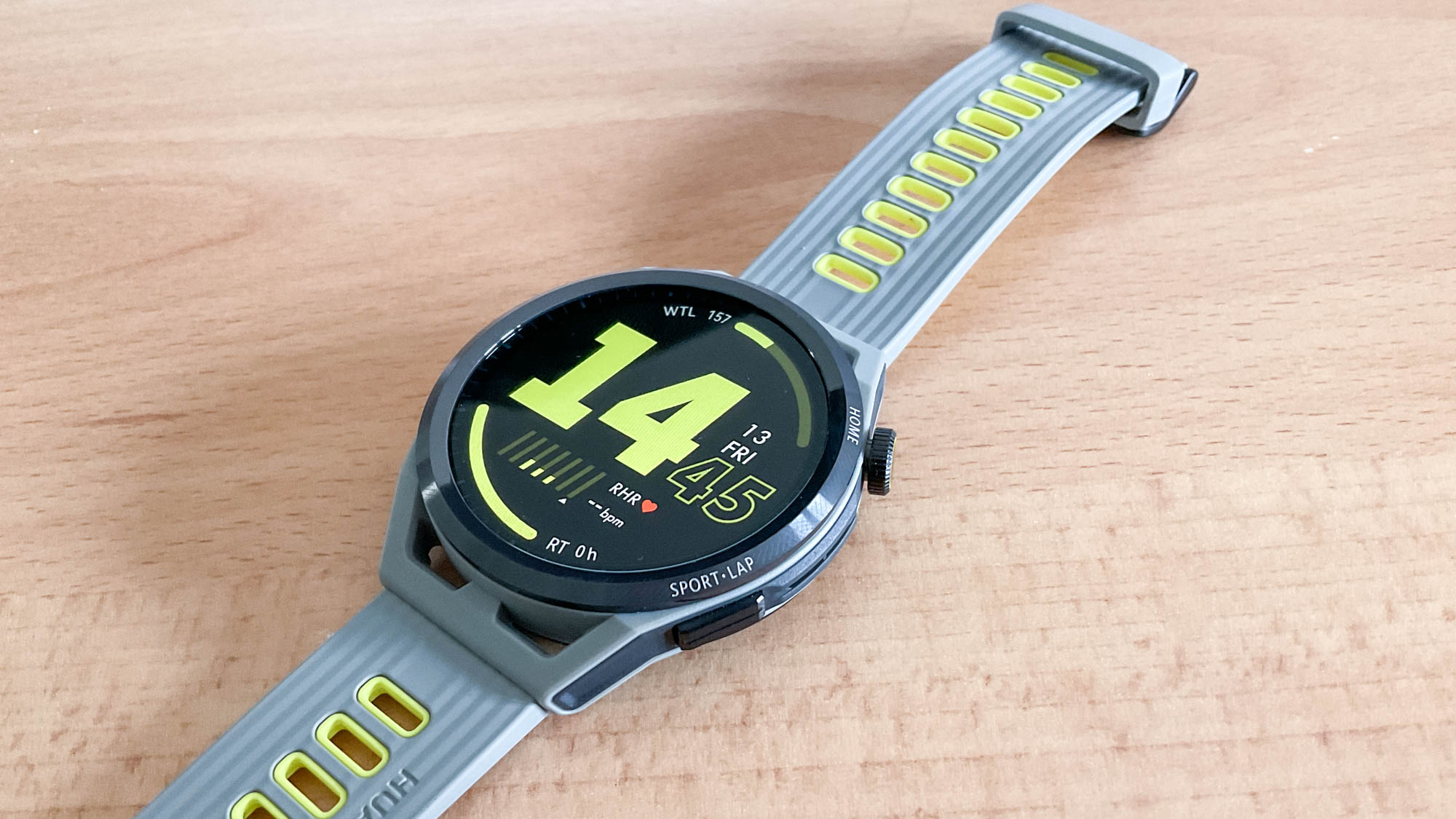
We received the grey model with a slightly more colorful silicon watch strap equipped with plenty of fitted holes to easily adjust its tightness. When putting it on, It was easy to fit the watch to comfortably sit on my wrist, and it’s easy to adjust on the fly. However, I find the strap holder to be impractical, as it seems oversized to the point where it doesn’t keep the end of the strap in place.
While the watch is lightweight to wear when working out, keeping it on for extended periods of time left my wrist engraved with the watch strap outline. For me, the watch needed to be this tight in order to stay at a guided point on my wrist to measure my heart rate. With this watch strap, it’s tricky to find the right fit compared to Apple’s Sport Loop.
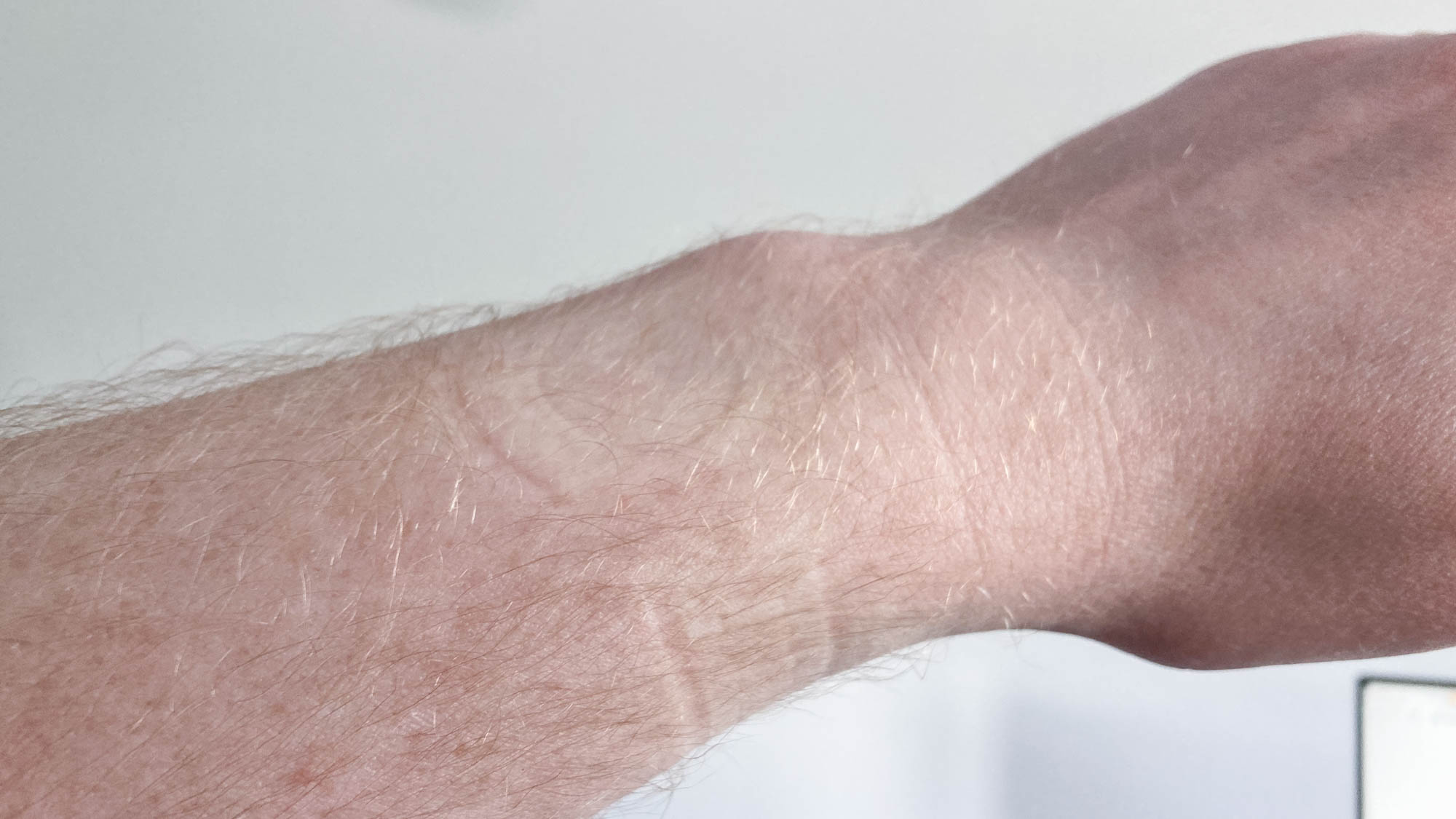
There’s a range of watch face displays to pick from, and most are quite fresh, sporty and trendy. While it can’t compete with the customization and quantity of watch faces on Apple’s wearable, many watch face options offer a sprawling list of analytics like the temperature, step count, heart rate, calories burned, and more. Oh, and the time, of course.
The GT Runner is water-resistant up to 50 meters (164 feet) and is designed to be used when swimming. There’s even a drain function that shakes out any unwanted water. While it is aimed at runners (it’s in the name, after all), it’s nice to see Huawei make the watch friendly to swimmers, too.
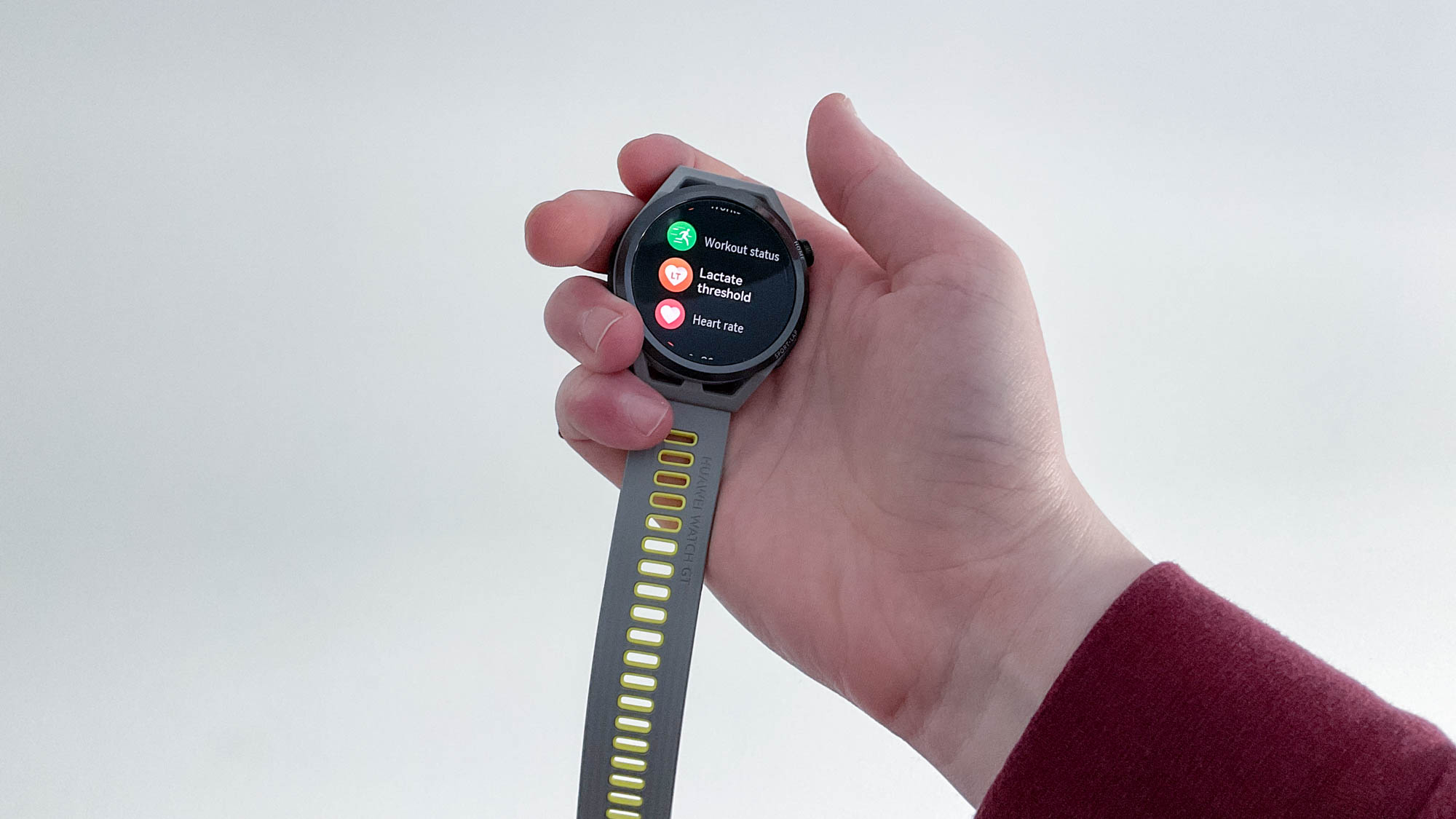
The GT Runner comes in at 1.82 x 1.82 x 0.43 inches, weighing 1.35 ounces without the strap and 1.83 ounces with the strap. It’s bigger and heavier than the Fitbit Sense (1.59 x 1.59 x 0.49 inches, 1.7 ounces) and Apple Watch 7 (1.77 x 1.5 x 0.42 inches, 1.37 ounces), but this didn’t make a difference in my workout routines. However, those who prefer a more subtle look may find the GT Runner to be slightly big, especially seeing how it only comes in one size. Still, this makes the display easy to read. Speaking of…
Huawei Watch GT Runner display
The Huawei Watch GT Runner sports a 1.43-inch AMOLED display with a 466 x 466-pixel resolution. Whether in bright sunshine or dark rooms, the smartwatch’s display is easy to read and see. Keep in mind that HarmonyOS doesn’t have many smooth and colorful animations, so the display isn’t used to its full potential.
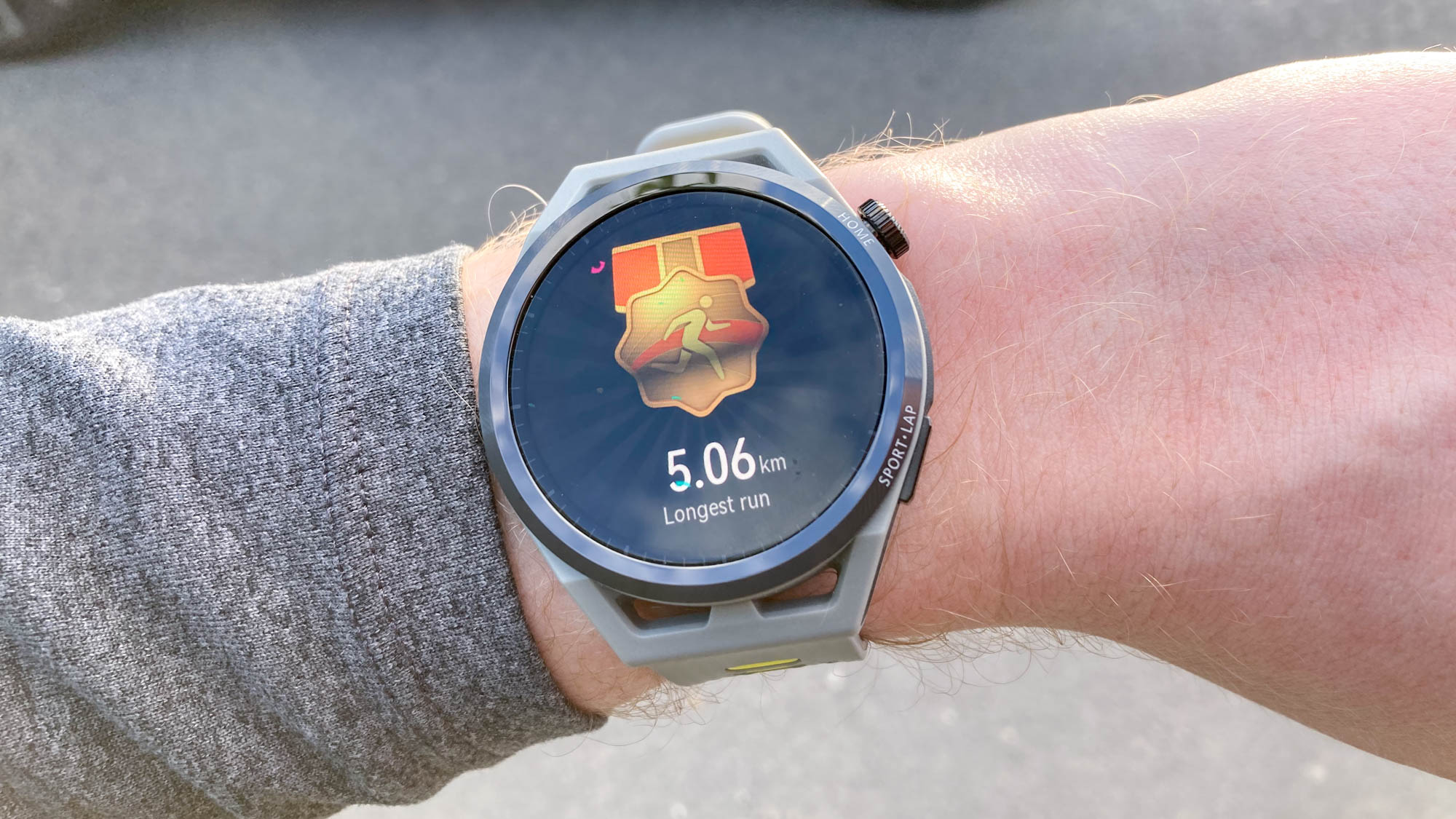
The touch-and-slide gestures are super responsive, if not a little too responsive. I found scrolling up and down the menu, using touch instead of scrolling with the crown slightly trickier, as I felt it would sometimes scroll past the option I wanted. Fortunately, the crown offers easy and quick navigation, which makes the touch controls a non-issue.
The GT Runner secretly has an always-on mode, which is prevalent in the best smartwatches today such as the Fitbit Sense and Apple Watch 7. But lifting my wrist to check the time or my progress when working out was just as efficient, as I never had trouble looking at the watch face. Plus, having a display that turns off every now and again significantly boosts the battery life, so I left this off.
Huawei Watch GT Runner health tracking
There is a couple of health tracking features the Huawei Watch GT Runner boasts that are known to be useful readings. However, Huawei itself states that its SpO2 measurement should be used for reference only and not for medical use. Like the Apple Watch 7 and Fitbit Sense, this measurement doesn’t have FDA approval (nor do we expect it to, seeing as it’s not available in the U.S.). While you can set alerts for high or low heart rates, the GT Runner doesn’t come equipped with an ECG monitor. Personally, I wouldn’t use this feature anyway, but it could be a deal-breaker for those specifically looking for it.
Heart rate tracking
The GT Runner uses an upgraded TruSeen 5.0+ heart rate module that claims to capture accurate heart rate monitoring even during strenuous workouts. From my experience of wearing smartwatches, I’d say these readings offer a good sense of basic information about your heart rate. Whether I’m working out or not, I feel the watch gave me the right information about my resting heart rate, which is usually just over 50bpm, along with its rapid increase when simply walking upstairs. The heart rate monitor also relates to the stress feature, letting you know when to relax.

SpO2 monitoring
I don’t have enough experience with SpO2 monitoring, but Huawei doesn’t provide a reliable enough reading compared to the transmissive sensors used by medical professionals.
It does, however, let you know the different threshold levels for what are good SpO2 levels. It only takes under a minute to get a reading, and I usually scored around 97%. You can use the automatic SpO2 tracking if you’re interested to see your blood oxygen levels, but it shouldn’t be used as a device for this purpose. Anything below 95% isn’t ideal, and if the smartwatch is off by a few percent, it’s already failed. This device is meant for tracking fitness, but having a few health tracking features as a basic reference point is welcome, too.
Huawei Watch GT Runner fitness tracking
If you’re a cardio devotee or trying to take your first steps at running, the Huawei Watch GT Runner will impress with the amount of data it tracks. It tracks running, cycling, skipping, swimming, skiing, rowing, and even triathlons. Notice a pattern? These are more travel-based cardio workouts, and there aren’t options for sport-specific workouts, HIIT, or strength training. There is the “Other” option, but I found it didn’t accurately track my more stationary workouts when it comes to calories. It also tracks indoor running, rowing machines, and cross trainers, but I still needed to adjust the distance I went manually as the watch struggled to detect this precisely.
Compared to other smartwatches around the same price range, it doesn’t come with the variety many might be looking for. However, it is called the “Runner.” What it lacks in variety it makes up for in excessive detail for your daily run or jog. With a dual-band five-system GNSS that tracks and maps your usual routes, data that measures your average stride, recovery heart rate, VO2 Max and more, along with a bunch of pre-set running courses and plans for all levels, the GT Runner is a fantastic companion to up your running game.
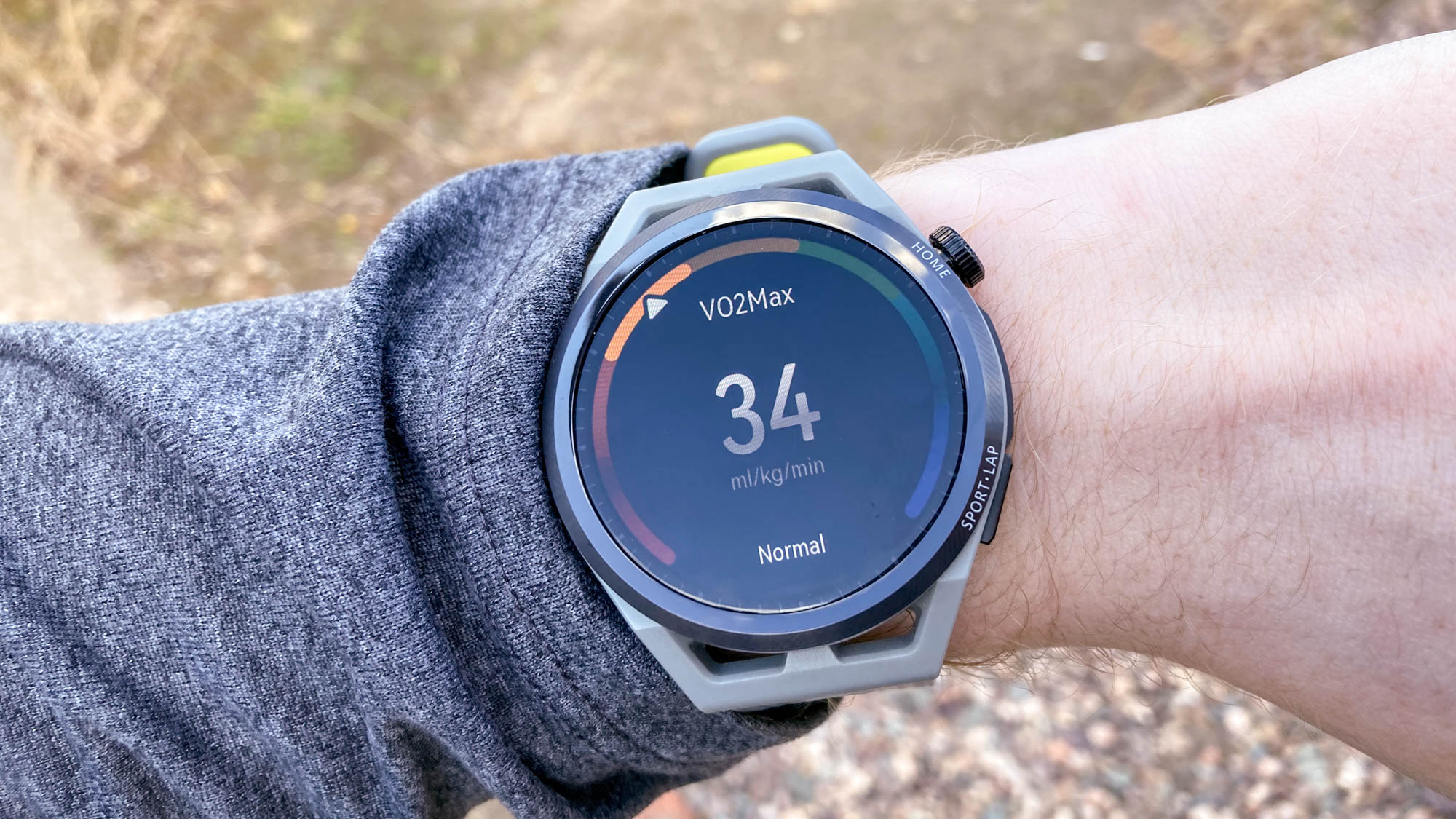
These running plans, which are what Huawei called “scientific running programmes” known as TruSport, are brilliant for beginners to ease their way into running and for more experienced runners to keep and improve their pace. They can range from a long slow distance run consisting of speed walking for six minutes and jogging for 60 minutes to moderate-intensity interval training (MIIT) that includes a couple of minutes of speed walking, jogging and running in intervals. Users can then get a running ability index to see how they scale and progress on a 100-point scale.
It isn’t all about working out, as rest is important, too. The training load feature lets you know how much you’ve been training and whether it’s a good time to take a break. For normally tracked workouts, there’s also a recovery feature that estimates how long it would take to properly recover from a workout. I appreciate this, as some smartwatches can make you feel guilty for not exercising despite working out excessively on previous days, and that’s an unhealthy mindset.
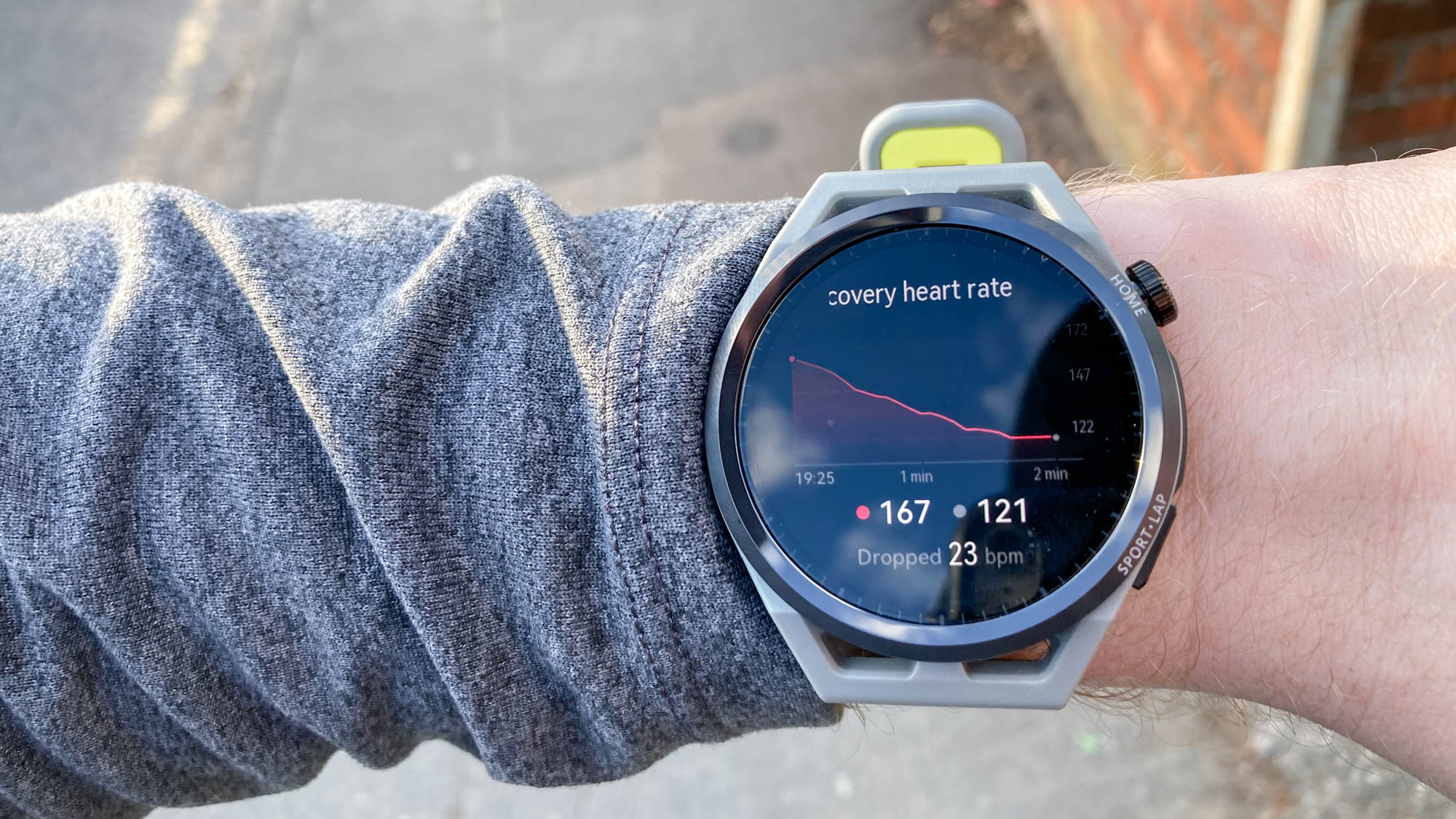
From measuring your lactate threshold to showing you how long your heart’s bpm stays in heart rate zones throughout a workout (such as extreme, anaerobic, fat-burning and warmup), the GT Runner will give you the stats you want to track your progress in key cardio workouts; especially for running. The watch can also auto-detect when you’re running, walking, or even rowing. However, this was inaccurate by a minute or two. I don’t know about you, but I want every minute to be accounted for when I work out, so I stuck with manually starting my workouts.
Huawei Watch GT Runner features
The Huawei Watch GT Runner connects to Android and iOS via the Huawei Health app, but you’ll want to download the Huawei AppGallery in order to get the latest version of the app, which is a nuisance. Otherwise, expect a similar feature set as Wear OS, including different watch faces, apps like Google Maps, and more.
However, while the smartwatch connects to your smartphone via Bluetooth and receives all your notifications and texts to read on its display, it doesn’t allow for contactless payments. Not everyone likes to use their smartwatch as a way to pay, but it seems like a missed feature considering other wearables at a similar price have this feature. I also found that certain watch faces need to be bought in order to use them, which can cost £1,99. That’s disappointing to see, as these watch faces should be available to all who already own the wearable.
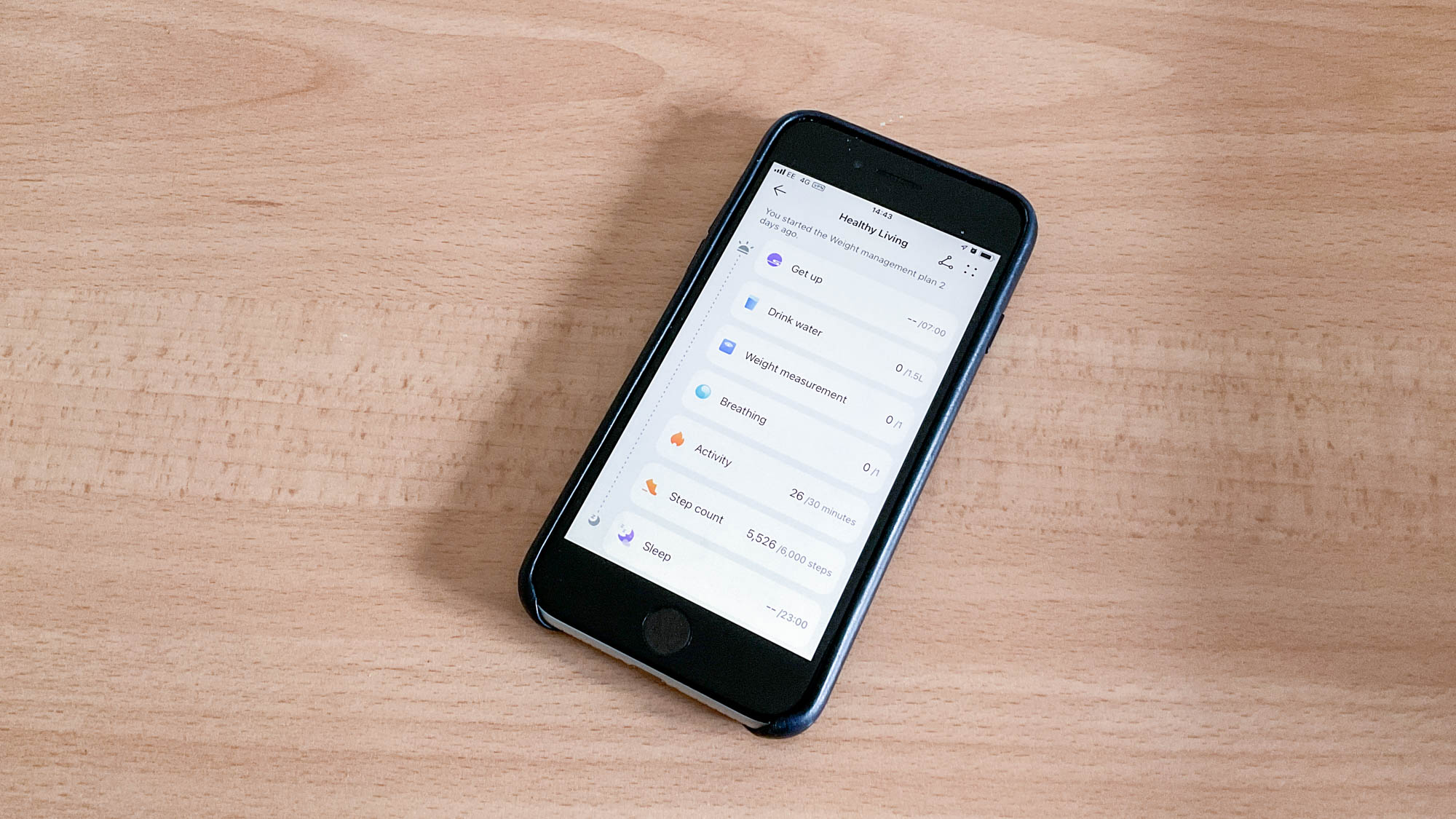
With the Huawei Health app, you can set up a “Healthy Living” plan to set goals on what you want to achieve throughout the day. This can be centered around losing weight, getting better sleep, feeling relaxed, and more. You’re then set up with activity goals including a step count, “Mood” that involves doing breathing exercises, and sleep goals. You can also add reminders to drink water, take your blood pressure, and to even smile (funnily enough, you can’t edit the goals settings for your “Daily smile” past once per day).
If you’re in need of a routine, this planner can be a handy way to stick to your goals. And you don’t have to have everything turned on, such as measuring your weight or getting a reminder to smile every day. I didn’t find these goals to be as easily accessible or as streamlined as the Apple Watch’s rings, although you can see the steps you’ve walked, the amount of time doing different activities, and the number of hours you’re active in a similar “rings” fashion in the activity records. Still, I personally prefer the calories I’ve burned throughout the day to be tracked as a goal.
Huawei Watch GT Runner battery life and charging
Huawei puts Apple to shame in the battery department. With an Apple Watch, charging it once per day is a guarantee. With the Huawei Watch GT Runner, I barely touched its wireless charger puck. The company isn’t stretching the truth about the smartwatch lasting two weeks, which blows away a lot of its competition.
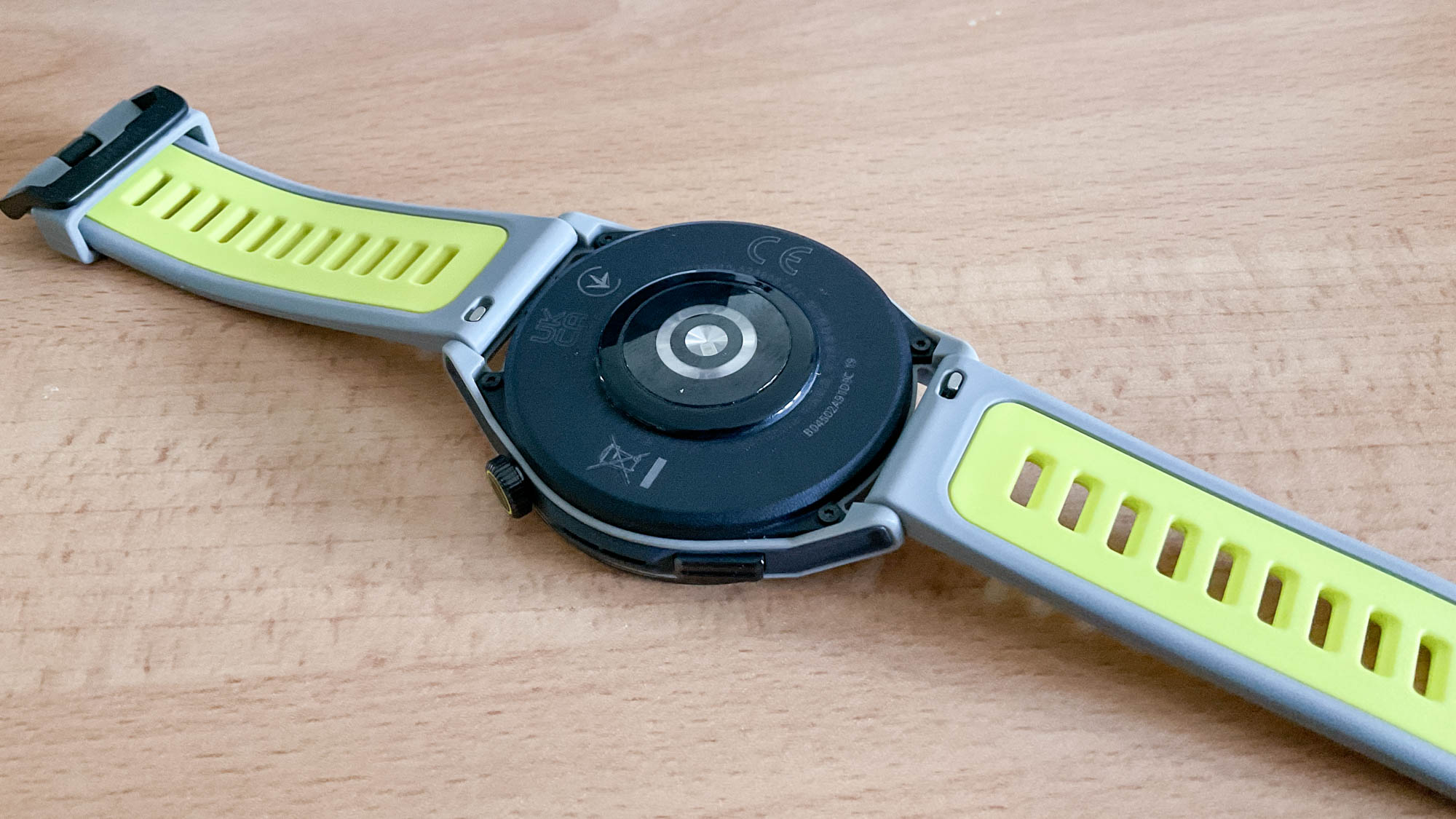
The GT Runner really sets the standard on how long a wearable should last without users constantly having to remember to charge their devices before working out. I would often record my daily 5km walks and 30 minutes of HIIT, and the GT Runner’s battery would only go down by 6% to 8% each day. Even after 5km runs and gym sessions, along with minor use of the SpO2 and heart rate monitoring, the battery just took it in its stride. Huawei states that it can last seven days after heavy use, but, depending on what they define as heavy use, I reckon it can go past that limit.
It could be that the GT Runner’s performance is beyond the capabilities of Huawei’s own HarmonyOS, but it’s still able to track a lot for days. Whatever the case, its excellent battery life means you’ll hardly ever worry about it. Even better, on the rare occasions when you have to do it, charging is fast.
Bottom line
Having a record of your workouts is becoming an essential part of keeping up a regular exercise routine. If these are more cardio-based, particularly running, then the Huawei Watch GT Runner is an ideal choice. Its running programmes are great for beginners and advanced runners, the amount of data it tracks is helpful, and its bright display makes it easy to read all those stats it jots down.
While the strap is comfortable and easy to adjust, I wish there were more options to choose from at checkout. For a £259 smartwatch, it would also be nice to see other trackable workout options and the ability to use contactless payments. That said, those who run will benefit more from the amount of data it delivers.
Compared to how intuitive Apple’s watchOS looks and feels, HarmonyOS still has a ways to go. Still, this doesn’t detract from what the GT Runner can do, and how long it lasts. Having a two-week battery life is a major win in the smartwatch market.
Fancy a run? The Huawei Watch GT Runner makes a suitable sidekick. For those after a more varied workout tracker at a similar price, check out the Apple Watch SE.


